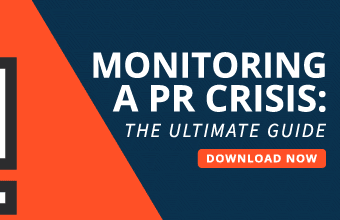While it’s not yet clear the extent to which COVID-19 will take its toll on our collective epidemiological, social, and economic health, it’s becoming very clear that people are frightened and businesses are preparing for down-side scenarios. If you are a business leader asking the tough questions about how resilient your business is, I suggest we start with a more foundationally important question: How resilient are your people?
For anyone managing people, this new business climate entails navigating much more than the actual impacts on the workforce, supply chain, and customer experience—it means keeping people focused, agile, and able to manage through fast-changing and adverse situations. Clearly, keeping your workforce resilient in this climate is going to be a challenge, but also an opportunity.
The opportunity starts with trust and the role employers and business leaders currently play in driving social consciousness. Public trust in employers is at an all-time high, compared to trust in media and the government, according to Edelman research, which has been publishing an annual barometer of trust in institutions for over 12 years. Also, globally 92% of employees agree that it’s critically important for the CEO to respond to challenging times and crises. So this is the time for leaders to step up and help people manage their own fears and panic, and thrive as best as they can. People are uncertain about the future, and that means they aren’t focused on being their best and perhaps doing their best. Resilient leaders may be the last defense in holding the line on business goals as well as the safety and well-being of their employees.
In terms of the challenge, COVID-19 isn’t just hype, although the media frenzy may be amping up our fears, which can impact business decision-making both top-down and bottom-up. Every employee plays a part in the business ecosystem and when people begin to make decisions based on emotional reactions, everything from high-level goals to operating practices can be at risk. According to Professor Steven Miller, at Rutgers University’s Journalism and Media Studies Department, “It’s just amazing how quickly word about this [coronavirus] has spread, the intensity of the coverage. The advent of social media [brings out] people’s need for instantaneous information,” he says. “It’s called feeding the beast.”
Beyond the panic and anxiety, increasing disruption from travel bans and work from home mandates, supply chain disruptions, deferral of non-strategic investments and a general recession-like climate will impact our day-to-day business-as-usual. When people are dispersed, it is harder to check in with them, harder to manage cultural implications and potentially harder to stay agile and adaptive. In times of pressure, however, staying agile and adaptive are more important than ever.
The bottom line for leaders: Recognize employees are wired to ”go negative.” It’s human nature to be afraid of spiders, tigers and the dark. Negativity tends to snowball, derail people and cascade into catastrophizing. Therefore it’s critical right now to practice and enforce realistic positivity so that even if we cannot control the situation, we can control our response to it.
Today’s climate of panic creates both an opportunity and an imperative for leaders starting with setting an example with key practices to affect a resilient mindset, and also take steps to foster a more resilient organization. Here are five key practices to implement and encourage to successfully manage through these unusual times:
1. Keep Your Emotions in Check
Coronavirus has our brains pinging on “future threat,” driving global anxiety and shared fear, as we all live in this extreme state of uncertainty. However, as leaders in the organization, you set the tone. Model calm: Be realistic about the situation, but keep the panic private. Take “worry time” on your own time, but allow yourself the space to vent. It will help confine your worries to appropriate times and places without risking the morale of your people. Provide employees with accurate and up to date information, while including positive messages—cautiously positive messages are helpful, especially when employees are working remotely. Here are 7 habits that will give you and your teams some tools to handle this tough situation.
2. Remain Realistic
People will begin to catastrophize in this extreme situation. It’s a natural response that’s rooted in self-preservation. While blind optimism can come off as dismissive and dishonest in a situation like this when you can’t guarantee that everything will be okay, you can model realistic optimism; planning for the best possible outcome. This involves naming the worst-case scenario, followed by the best-case scenario, and ultimately landing on what is most likely to occur. Then outline the steps to make this happen in a productive and practical way. Your people want to hear that you have a plan in place. Determine the steps before you share them, and make sure they are ones you can deliver on.
3. Adaptivity is Key
Working smart means making informed adjustments based on the information you have. Set up policies that allow people to work smartly and with minimal risk. Communicate with your team around goals and responsibilities, individually (when possible), on an organization-wide level, and online. Determine the best tools to help your people stay flexible, engaged, and connected. Limit the amount of energy spent on speculation.
4. Encourage Empathy
While our fear responses may escalate beyond reason, the fear response itself is normal. First and foremost—even before constructing a plan—make sure to provide your employees with a foundation of support. This is key to building trust with your employees, who, studies show, are more likely to get behind a leader they connect to. Rather than trying to “fix” the situation, simply listen. By definition, empathy involves taking the perspective of another, which will help your employees feel less alone in whatever feeling they’re responding with. In addition, rather than sugar-coating messages for people, try relating to their feelings and being straight but supportive about the current situation.
5. Empower Your People
Last, but very important, encourage agency, empowerment, and self-care. Message that accepting help is okay. Make tools to help people stay flexible, out of danger, and encourage a sense of teamwork and collaboration, even if quarantined or working remotely for a prolonged period. Help people to help themselves. According to meQuilibrium’s co-founder and Chief Medical Officer Dr. Adam Perlman, who is also Director of Integrative Health and Wellbeing for Mayo Clinic Florida and Medical Director for Employee Wellbeing on the Mayo Florida campus, “In times of uncertainty we forget or ignore the most fundamental self-care. We should do what we should always do: Take care of ourselves, wash our hands, and make adjustments to work out at home. These things give us a sense of control when the world at large seems more overwhelming.”
When it comes to uncertainty, we may not always be able to control the outcome, but we can control our response to it. And that’s resilience. It gives you the tools to bounce back from tough situations and thrive in the face of challenges.
This article originally appeared on Forbes.com; reprinted with permission.








